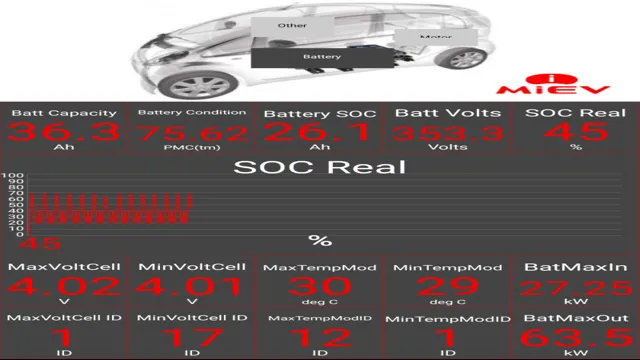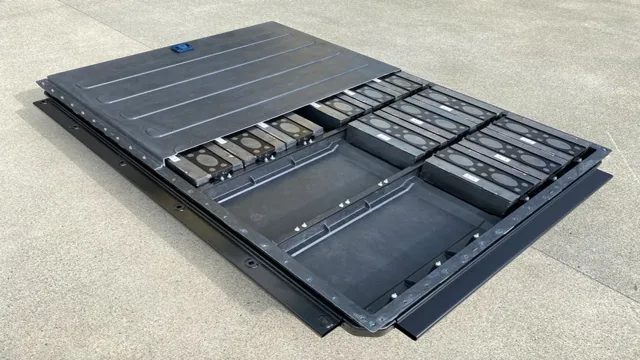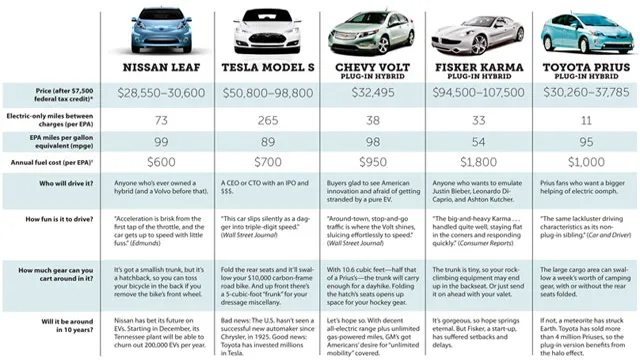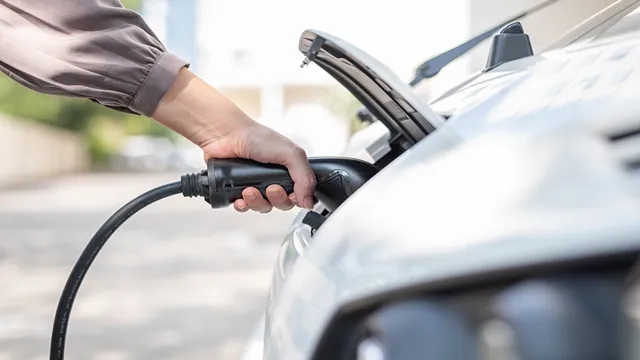Revolutionize Your Home with Electric Cars as Sustainable Battery Source
If you’re considering making the switch to an electric vehicle, have you thought about also investing in an electric car home battery? With the rise of sustainable energy and the importance of reducing our carbon footprint, many households are looking for ways to not only power their cars but also their homes with clean, renewable energy. An electric car home battery, also known as a home energy storage system, allows you to store the excess energy generated by your solar panels or wind turbines. This means that you can use this energy to power your home during peak energy usage times or even when the power goes out.
Not only can an electric car home battery save you money on your energy bills, but it is also an environmentally conscious choice. It reduces your reliance on fossil fuels and helps to reduce your overall carbon emissions. Investing in an electric car home battery may seem like a daunting task, but with government incentives and decreasing costs, it is becoming more accessible for households.
Plus, you’ll be doing your part in reducing your carbon footprint and helping to create a sustainable future. Are you ready to take the next step in your sustainable energy journey? Consider investing in an electric car home battery and start powering your home with clean energy.
Introduction – Saving on Energy Bills
With rising electricity costs and a growing concern for the environment, more and more homeowners are looking for ways to reduce their energy bills and decrease their carbon footprint. One innovative solution that is gaining popularity is using an electric car as a home battery. By connecting your electric car to your home’s electrical system, you can use the car’s battery to supplement your energy usage during peak hours when electricity rates are typically higher.
This not only helps you save money on your energy bills but also ensures that you are using renewable energy sources. Additionally, during power outages or emergencies, you can use your home battery to power essential appliances and keep your family safe and comfortable. The electric car as a home battery is a smart and sustainable choice for homeowners looking to make a positive impact on the environment and reduce their energy costs.
Benefits of Using an Electric Car as Home Battery
In recent years, electric cars have been gaining popularity due to their environmentally friendly nature and cost-effective benefits. However, what many people do not realize is that they can also be used as home batteries! By plugging your electric car into your home, you can store the excess energy from your solar panels or wind turbines and use it when you need it most. This means that you can save money on your energy bills by not relying on the grid during peak times.
Additionally, using your electric car as a home battery is a great way to reduce your carbon footprint and contribute towards a greener future. With simple installation and maintenance, it’s never been easier to take advantage of the benefits that an electric car can provide to your home energy system. So why not consider making the switch today and start reaping the rewards?

Lower Energy Costs and Higher Efficiency
Saving on energy bills is a top priority for many households and businesses alike. This is understandable, as energy costs can take up a significant portion of a household or business budget. Fortunately, there are several ways to lower energy costs and increase efficiency.
One of the easiest ways to do this is by switching to energy-efficient appliances, such as LED light bulbs and smart thermostats. These appliances consume far less energy than their traditional counterparts, leading to a reduction in energy costs over time. Another effective way to lower energy costs is by implementing good energy habits, such as turning off appliances when they’re not in use and adjusting the thermostat to an appropriate temperature.
Additionally, investing in energy-efficient windows, insulation, and HVAC systems can also lead to significant cost savings over time. Overall, there are many ways to cut down on energy bills and increase efficiency, and it’s more important than ever to implement these measures for a sustainable future.
Offsetting Carbon Footprint and Reducing Environmental Impact
Offsetting carbon footprint and reducing environmental impact have become essential practices in today’s world. People are becoming more aware and conscious about their actions that may harm the environment. One of the ways to offset your carbon footprint is by saving on energy bills.
This may sound simple and insignificant, but can have a tremendous impact over time. By reducing your energy consumption, you reduce the demand for energy, resulting in lower carbon emissions. Simple changes like turning off the lights and unplugging electronics when not in use, setting the thermostat to an energy-efficient temperature, and upgrading to efficient light bulbs can contribute to significant energy savings.
These small steps can not only help in reducing your carbon footprint but also save you money on your energy bills. So let’s take small steps and make a big impact on the environment.
How It Works – Charging and Discharging
Using your electric car as a home battery is an innovative and eco-friendly solution that can benefit both the environment and your wallet. Essentially, an electric car battery can store excess energy when the vehicle is not in use, and this stored energy can be used to power your home. When you need to charge your electric car, you can draw energy from your home’s electrical supply, but you can also charge the car battery using your rooftop solar panels, reducing the need to rely on the main electrical grid.
This setup provides a clean and sustainable source of energy while also giving homeowners control over their energy usage and costs. Plus, it’s not just limited to electric cars – there are also home batteries available that provide the same service without the need for a vehicle.
Charging Your Electric Car Battery
Charging an electric car battery might seem like a daunting task, but it’s actually quite simple once you understand the basics of charging and discharging. Essentially, when you plug your electric car into a charging station or power source, the battery begins to receive an electrical charge. As the battery charges, it stores the electrical energy, just like a phone or laptop battery.
When you’re ready to hit the road, you simply unplug the car and the battery begins to discharge, providing power to the car’s electric motor.
The charging process can vary depending on the type of charging station you’re using. Fast charging stations, also called DC fast chargers, can charge the battery in as little as 30 minutes, while slower Level 2 chargers can take several hours to fully charge the battery.It’s important to note that you should only use charging stations that are compatible with your car’s charging capabilities, as using the wrong type of charger can damage the battery. Overall, understanding how charging and discharging works is key to keeping your electric car charged and ready to go at all times. With the growing number of public charging stations and convenient at-home charging options, charging your electric car has never been easier.
So go ahead, plug in and enjoy the ride!
Discharging Your Electric Car Battery
When it comes to the battery in your electric car, there are two main states to be aware of: charging and discharging. Charging your electric car battery is a straightforward process, but discharging it can be a bit more complex. Essentially, discharging is the opposite of charging.
Instead of electricity flowing into the battery from an external source, it flows out of the battery to power the vehicle’s electric motor. This process is controlled by the car’s power management system, which monitors the battery’s state of charge and regulates the flow of electricity. When you press on the accelerator, the power management system “opens the floodgates,” allowing electricity to flow freely out of the battery and into the motor.
As you drive, the battery’s state of charge gradually decreases until it needs to be recharged. It’s important to remember that discharging your electric car battery too deeply can be detrimental to its health, so it’s best to keep an eye on your car’s range and recharge before the battery gets too low.
Limitations and Considerations
Using an electric car as a home battery can have its limitations and considerations. One limitation is the capacity of the car’s battery itself. Although electric car batteries are designed to be efficient, they may not have the same capacity as traditional home battery systems.
Additionally, using an electric car as a home battery can negatively impact the car’s lifespan and performance, as frequent discharging and charging can cause wear and tear on the battery. There is also a risk of overloading the car’s battery and causing damage. It’s important to consider these factors before attempting to use an electric car as a home battery.
However, with proper monitoring and precautions, it is possible to use an electric car as a temporary backup power source during an outage or to supplement home energy usage. Overall, using an electric car as a home battery requires careful consideration and vigilance to ensure the safety and longevity of the car’s battery.
Battery Capacity and Range Limitations
When it comes to electric vehicles, one of the biggest limitations to consider is battery capacity and range. While technology has continually improved over the years, there are still certain factors that can affect the range of your electric vehicle. For example, extreme temperatures can have a significant impact on your battery’s performance, reducing its range in colder weather.
Additionally, driving habits and terrain can also play a role in how far you can go on a single charge. It’s important to understand these limitations and consider them when planning your trips or daily commutes. However, it’s worth noting that many electric vehicles have impressive ranges, and advancements in technology are continually pushing these limits further.
By being aware of these limitations and choosing a vehicle that is well-suited to your needs, you can enjoy all the benefits of an electric vehicle without any major inconveniences.
Compatibility with Existing Home Infrastructure
When it comes to integrating new home automation technology into an existing infrastructure, there are several limitations and considerations to keep in mind. One of the main limitations is the age and type of wiring in the home. Older homes may not have the necessary wiring to support more advanced smart home systems, such as those that require Ethernet or fiber optic cables.
In addition, the compatibility of existing devices should also be taken into account. For example, some older appliances or security systems may not be compatible with newer smart home technology. Moreover, the placement of devices also matters as some devices may not work as intended if they are installed in the wrong place.
It’s important to consult with a professional to assess your home’s compatibility and to ensure that the integration of new technology is done correctly.
Conclusion – The Future of Home Energy Storage
In conclusion, the idea of using an electric car as a home battery is a perfect example of innovation meeting sustainability. It is like having a double-edged sword – a car that not only takes you places but also powers your home efficiently. In a world where we are constantly looking for ways to decrease our reliance on harmful fossil fuels, this concept is a breath of fresh air.
So, why not let your car pull its weight even when it’s parked in the garage? It’s time to revolutionize the way we approach energy consumption, and the electric car as a home battery is a game-changer. Join the green revolution today!”
FAQs
What is an electric car home battery system?
An electric car home battery system is a process where you can use the battery of your electric car to power your home.
How does an electric car home battery system work?
When the electric car is charged, the excess power can be stored in its battery for future use. This battery can then be used to power your home when required.
Can an electric car battery fully power a house?
The electric car battery won’t be enough to power a whole house. However, it can provide some power to run some essential appliances in your home during an emergency.
Is it safe to use an electric car battery as a home battery?
Yes, it is safe to use an electric car battery as a home battery. Many electric car manufacturers design their batteries to have a long life and are safe for usage in a home battery system. However, it is best to seek advice from a professional before setting up an electric car as a home battery.






